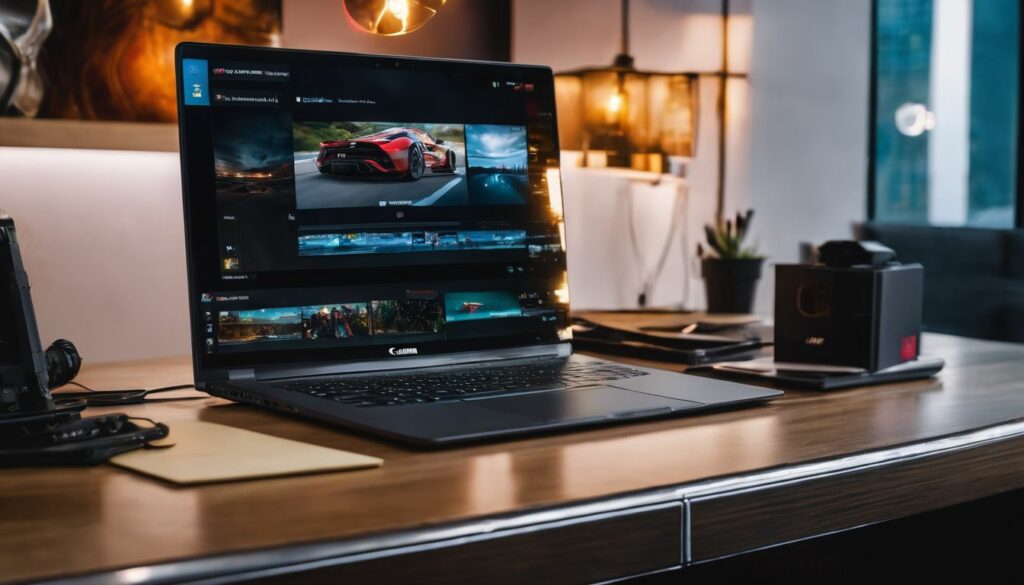Have you ever visited a website and felt lost? Like you’re stuck in a maze, clicking around aimlessly, trying to find what you need? It’s frustrating when what should be a simple task turns into an online expedition.
You’re not alone if this has been your experience; many users face these challenges daily.
Interestingly, did you know that smooth navigation can increase the time customers spend on your site? An easy-to-navigate website is like having a friendly guide taking your hand and leading you exactly where you want to go – quickly and effortlessly.
This article will explore how seamless navigation isn’t just about getting from point A to B; it’s about creating enjoyable digital journeys for every visitor. Keep reading to discover how perfecting this aspect of your site can transform user experiences into business success.
Ready to enhance your user engagement? Let’s dive in!
The Importance of Seamless Navigation for User Experience

Understanding user expectations and designing intuitive navigation are crucial for enhancing the overall user experience. Utilising user feedback to make continuous improvements is also essential in maintaining a seamless navigation process.
Understanding user expectations
People who visit your website want to find what they’re looking for fast. They expect the site to be easy to use. If they click on your homepage, they do not want to get lost or confused.
A good navigation helps them move around without trouble. It lets them reach the info or products they need quickly.
Your website must meet these needs if you want happy visitors. This means having a user-friendly design and clear menus. Your site should work well on phones too because lots of people surf the web on their mobiles nowadays.
Listen to what users say about your site and make changes if needed. This makes sure your navigation stays simple and helpful.
Designing intuitive and simple navigation
Make your website easy to use. Think about how someone finds stuff in a shop. Put things where they can see them and get to them without trouble. Your website should be like this too — clear signs, simple words, and no messy paths that lead nowhere.
Use smart designs that guide users right to what they want. A clean menu, big buttons, and helpful links make visiting your site a smooth ride. This keeps people happy and makes them come back for more.
Imagine you run an online store. With good navigation, customers can quickly find the red shoes or toy cars they’re looking for. They click less and buy more!
Before moving on, make sure every part of your site is easy to reach with just a few clicks — it’s what keeps users clicking on instead of clicking away.
Utilising user feedback to make improvements
Once the navigation is in place, listening to what users say about it helps make it better. People who visit your website can give you real opinions on how easy or hard it is to use.
Their feedback shows which parts of your website work well and which don’t. By paying attention to their thoughts, you can find problems and fix them quickly.
Acting on user comments can lead to a smoother website experience. For instance, if visitors say they get lost on the site, this feedback may suggest that sitelinks could be improved for easier content access.
Keeping track of such details ensures that your navigation design stays simple and efficient, keeping users happy and engaged.
The Business Impact of a Well-Designed Homepage on User Experience

A great homepage can make a big difference for your business. It’s often the first thing customers see, and it sets the stage for their whole experience on your site. If it’s easy to get around and looks nice, people will want to stay longer and look around more.
This means they are more likely to buy something or use your service.
Keeping things simple makes sure that users find what they need fast. The quicker they get to the good stuff, like products or helpful info, the happier they’ll be. And happy users turn into loyal customers who come back again and talk about how great your website is with friends.
With seamless navigation, you help them move smoothly from one page to another without any trouble – this keeps them focused on what you have to offer instead of getting lost or giving up.
Strategies for Improving Website Navigation
Conduct user research, develop user personas, utilise responsive design, test and iterate, implement a three-click rule for efficient navigation, and improve website performance and speed.
Find out more about how these strategies can enhance your website’s navigation for an improved user experience.
Conducting user research
To learn what users need from your website, you have to ask them. User research involves talking to the people who visit your site. Find out what they like, what confuses them, and how they think the site could be better.
This can give you powerful insights into how to design your navigation so it feels natural and easy for visitors.
Use surveys, interviews, or watch people as they use your website. Look at where they click and how long it takes them to find what they’re looking for. If lots of people struggle with the same things, you know those are areas you need to fix.
Making changes based on real user experiences will help make sure that when someone comes to your site, they can get around easily and feel good using it.
Developing user personas
Creating user personas is like drawing a map of the people who visit your website. You think about their likes, needs, and problems. This helps you see your site as they do. When you know your visitors well, you can make paths on your site that fit them just right.
For business owners, building these personas means asking questions. What brings someone to your ecommerce site? Are they there to browse or buy something specific? User research tells you this.
Then use what you learn to shape a user-friendly design that feels like it’s made just for them.
Next up is making sure those designs work on all devices with responsive design.
Utilising responsive design
Responsive design makes sure your website works well on phones, tablets, and desktops. It’s a key part of making navigation smooth for users. They can visit your site from any device and still enjoy the same great experience.
This flexibility is important. More people are using mobile devices to go online every day.
Your website has to adjust to different screen sizes quickly. If it doesn’t, users might get frustrated and leave. A responsive design helps keep everything looking nice and working right no matter what device someone is using.
This means better user engagement and more chances they will stay on your site longer.
Testing and iterating
Utilising responsive design ensures that your website adapts to different devices, but testing and iterating are essential to ensure its effectiveness. After implementing a design or navigation change, regularly test it with real users and gather feedback for iteration.
Through this process, you can identify any usability issues and make continuous improvements based on user preferences and behaviors. Testing and iterating allow you to refine your website’s navigation, making it more intuitive, efficient, and satisfying for users as they interact with your digital content.
Implementing changes without testing can lead to potential user experience issues, while regular iteration based on real user data helps in refining the website’s navigation over time.
Implementing a three-click rule for efficient navigation
Implementing the three-click rule helps enhance user engagement and satisfaction by ensuring that users can find what they need in just a few clicks. By simplifying the navigation process, businesses can increase user retention and reduce the likelihood of visitors leaving due to difficulty finding information.
This UX principle emphasises efficiency and aims to streamline the user experience, ultimately contributing to improved website performance and customer satisfaction.
Improving navigation through the implementation of a three-click rule is essential for boosting user interaction on your website. It’s crucial to ensure that customers can easily access information or products within a few clicks, thus enhancing their overall digital experience while increasing engagement with your brand.
Improving website performance and speed
To ensure a seamless user experience, it’s crucial to focus on improving website performance and speed. Fast-loading websites contribute to user satisfaction and retention, directly impacting engagement and conversion rates.
Studies have shown that even a one-second delay in page load time can result in decreased customer satisfaction and increased bounce rates. By optimising website performance and speed, businesses can create a smoother navigation experience for users, leading to enhanced engagement and higher chances of conversions.
Efficient website performance not only enhances user experience but also positively impacts SEO rankings. With search engines favouring fast-loading websites, optimising performance becomes essential for attracting organic traffic and improving overall online visibility.
Conclusion
Seamless navigation is key to enhancing user experience. By understanding user expectations and designing intuitive navigation, businesses can significantly impact engagement and satisfaction.
Implementing strategies such as responsive design and the three-click rule can lead to practical and efficient improvements on websites. How will you apply these insights to your business’s website? Consider exploring further resources for additional guidance.
Remember, small changes in navigation can make a big difference in user satisfaction and business success.
Discover the profound effect a well-designed homepage can have on your users by exploring our in-depth analysis, “First Impressions Last: The Business Impact of a Well-Designed Homepage”.


